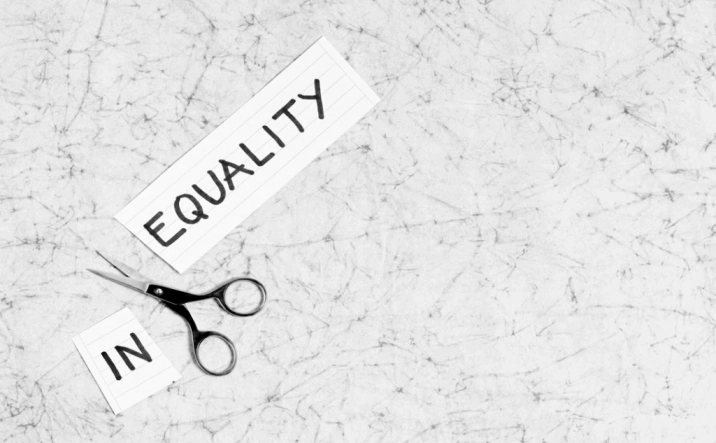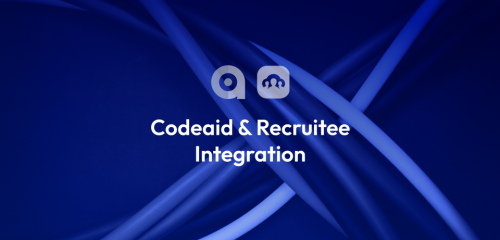More and more companies are rallying behind the remote revolution. These days, you can find employees from all corners of the globe collaborating together on projects, whether they’re nestled in their favorite coffee shop, enjoying the coziness of their home office (yes, PJs included), or soaking up the sun while working at some exotic location.
While this diverse blend of cultures, thoughts, and experiences can provide immense value, there is still the matter of ensuring everyone feels included, heard, and valued.
In this blog, we’ll unpack the benefits of diversity in the workplace, why it’s important, and how to begin to build a fully inclusive work culture.
What is diversity in the workplace?
Most people, when they hear “workplace diversity,” think it’s all about having a mix of genders, ethnicities, and age groups. While this is not wrong, diversity in the workplace runs much deeper than these surface-level attributes. It’s also about fostering a work culture where every individual—regardless of their ethnicity, gender, age, sexual orientation, or physical abilities—feels genuinely valued and included.
Think of it this way: It’s not just about inviting everyone to the party, but also asking them to dance. It’s about celebrating each other’s differences, learning from unique viewpoints, and appreciating the richness that these varied outlooks bring to the table.
Why are diversity and inclusion in the workplace important?
Diverse teams bring a broad range of perspectives, experiences, and ideas to the table, sparking creativity and innovation. When a company champions inclusion, every team member is empowered to voice their opinions and ideas, ultimately leading to better decision-making and more out-of-the-box thinking. And it’s not something that only affects employee morale. An inclusive company culture also resonates with a wider range of customers and clients, bolstering a company’s reputation and market appeal. Moreover, organizations that prioritize inclusivity often see increased employee engagement and retention. With that, it’s clear to see that diversity and inclusion aren’t just morally right—they’re smart business strategies.
Diversity in the Workplace: Facts & Statistics
If you’re still unsure, let’s allow the numbers to do the talking.
- Companies embracing diversity see a 2.5 times higher cash flow per employee.
- Gender-diverse companies outperform less gender-diverse peers by 48%.
- Achieving gender equality in the global workforce by 2030 could potentially boost global GDP by $13 trillion.
- 76 percent of job seekers and employees said a diverse workforce was an important factor when assessing job opportunities and companies.
- Companies with significantly more racial and ethnic diversity are 35 percent more likely to outperform competitors.
- Diverse companies are 70% more likely to capture new markets
- Unfair treatment causes many tech workers to resign, a problem that’s 10% more prevalent in tech companies than in non-tech industries.
Types of Diversity
Diversity, like a multi-faceted diamond (and just as valuable), exists in numerous forms:
Racial and Ethnic Diversity
This is probably what first comes to mind for most of us when we hear “diversity.” It’s all about having a mix of individuals from various racial and ethnic backgrounds. Picture a workplace that looks like a vibrant, global map—each pin representing a different race or ethnicity. A company with good racial diversity might have team members from a variety of backgrounds all bringing their unique perspectives to the table.
Gender Diversity
The importance of gender diversity in the workplace isn’t just about having a balanced number of men and women. It also includes those who identify as non-binary or transgender. A company displaying good gender diversity might have women leading technical teams or men heading up human resources, breaking down traditional gender roles and stereotypes.
Age Diversity
Age diversity is all about mixing different generations—Baby Boomers, Gen X, Millennials, and Gen Z—in the same workplace. Imagine a project where a tech-savvy Gen Z collaborates with a seasoned Baby Boomer. They each bring something unique to the table—the Baby Boomer provides wisdom and experience, and the Gen Z worker contributes a fresh, tech-forward perspective.
Cultural Diversity
This refers to the mix of employees from different cultures or nationalities. When your team is culturally diverse, it includes people from various cultural backgrounds and experiences. Let’s say you’re designing a product for a global market. A culturally diverse team would ensure that the product appeals to consumers across different cultures.
Disability Diversity
Just because someone might be visually impaired or uses a wheelchair doesn’t mean they can’t be a valuable member of the team. With the right accommodation, they can bring a unique perspective and potentially design solutions that are more accessible to all users.
The Benefits of Diversity in the Workplace
So, what’s the big deal from a business standpoint? Are there any tangible benefits of diversity in the workplace? Absolutely! Here’s why and how:
- Increased creativity and innovation
When a group of people all think alike, ideas can become stale. That’s why diversity is like a breath of fresh air—it brings fresh ideas and perspectives, driving innovation. In fact, the Harvard Business Review found a significant correlation between diversity and innovation, in that the most-diverse enterprises surveyed in their study of 1700 companies were also the most innovative.
- Broader range of skills and talents
Let’s be real, if you’re fishing in the same pond all the time, you’re likely to catch the same fish over and over. Opening up your recruitment process to be more inclusive means opening the floodgates to a wider, more diverse pool of potential hires. You know what they say about variety, it’s the spice of life! Plus, considering the fact that 67% of job seekers consider workplace diversity an essential factor when evaluating job offers, it’s crucial to adopt diverse hiring practices to attract the best talent.
- Enhanced decision-making:
Decisions, decisions, decisions. They’re a part of everyday business life. But who makes the decisions and how they’re made can have a huge impact on a company. When diverse teams are involved in decision-making processes, the outcomes tend to be better. According to a study, diverse teams exhibited a 60% improvement in decision-making compared to non-diverse teams. Diversity brings multiple perspectives, leads to more deliberation, and results in decisions that have been viewed from different angles.
- Improved problem-solving:
Much like decision-making, problem-solving also benefits from diversity. People from different backgrounds might see different solutions to the same problem. Having these various perspectives can lead to more effective and innovative solutions.
- Increased adaptability and flexibility
Diverse workforces are marked by a wealth of varied experiences and backgrounds. This richness of perspectives allows the team to be better equipped to adapt to changes swiftly and navigate challenges effectively. It ensures that teams are not only responsive to changes in the business environment but are also able to anticipate and prepare for these changes. This adaptability and flexibility are crucial for the survival and growth of a business in an ever-evolving marketplace.
- Expanded market reach and customer understanding
Diversity and inclusion aren’t just good for the workforce; they’re good for business. A diverse workforce can cater to a diverse customer base, leading to increased sales and profits. Research has found that companies with more diverse management teams have 19% higher revenue due to innovation. It has also been found that a 10% increase in racial and ethnic diversity on the senior executive team resulted in a 0.8% rise in earnings.
- Increased employee engagement and trust
Feeling a part of something and being appreciated for their unique attributes, significantly boosts an employee’s engagement level. An engaged employee is a motivated employee, and a motivated employee works harder, smarter, and more creatively. What’s more, inclusive workplaces have shown to promote better physical and mental health among employees, reducing absenteeism and improving overall performance.
- Positive company reputation
In the age of social media, Google reviews, Glassdoor, and the like, reputation matters a lot. Companies with a reputation for embracing diversity and inclusion are seen as progressive, equitable, and forward-thinking. This positive image not only entices skilled individuals seeking a supportive and enriching work environment, but it also resonates with customers who are increasingly valuing and choosing to support businesses that uphold inclusive values.
Diversity in Leadership
Why is diversity important in leadership?
Diversity in leadership is important because it brings varied perspectives, experiences, and ideas to the decision-making table, fostering innovation and creativity. Leaders with diverse backgrounds can draw from their unique experiences to approach problems from different angles, allowing for a broader range of potential solutions. This diversity of thought can be a key driver in company growth and adaptability.
How can a leader promote diversity?
Well, it starts at the top, doesn’t it? Leaders themselves need to embody diversity and inclusion. They must walk the talk, creating an environment where everyone feels they belong. It’s about being conscious of biases, both in themselves and in the systems around them. Leaders have to ensure that their team members don’t just understand the importance of diversity but also see it in action. Here, communication is key. Open dialogue about diversity and inclusion, acknowledging the challenges, and discussing the way forward can go a long way. Leaders should be willing to have these sometimes-uncomfortable conversations. After all, change isn’t always easy, but it’s certainly worth it, right?
How can a tech company ensure diversity in their team?
Make an inclusive culture part of your company’s DNA
An inclusive company culture makes everyone feel welcome, irrespective of their background. This can be fostered through regular diversity and inclusion training, celebrating different cultures and their festivals, and providing platforms for employees to share their experiences and perspectives.
Create equal opportunities for growth
Provide equal opportunities for career growth to all employees. Encourage mentorship programs where junior employees can learn from senior team members. Offering learning opportunities, career development programs, and leadership training to all employees also promotes diversity.
Inclusive benefits and policies
A diverse workforce may need diverse benefits. For instance, flexible work policies can be beneficial for employees with children or those who need to care for elderly family members. Similarly, providing benefits like mental health resources can also make your company more appealing to a diverse range of candidates.
Encourage employee resource groups
Employee Resource Groups (ERGs) are groups of employees who come together based on shared characteristics or experiences. These groups can offer support, help in career development, and promote understanding among different groups within the company.
Diverse hiring practices
It’s essential to adopt hiring practices that encourage diversity. From posting job advertisements on diverse job boards to working with recruitment agencies that specialize in diversity, there are several ways to ensure a diverse pool of candidates. Make sure to carefully craft job descriptions that are inclusive, as you don’t want to unintentionally exclude certain groups.
Unbiased assessments
Whether you’re assessing potential new team members or existing ones, adopt a system that leaves no room for bias. This means focusing purely on the skills, experience, and potential of individuals rather than their personal characteristics. Codeaid is a great example of this for tech teams, as it uses a fully automated (yet still extremely in-depth) scoring algorithm that evaluates developers purely based on their coding. This approach fosters a merit-based evaluation process, thereby leveling the playing field for all. Additionally, Codeaid has also recently release the AI Interviewer software which complements their existing assessment platform, ensuring technical recruiters can streamline their process and hire the best candidate.
Closing thoughts
Building a diverse and inclusive workplace is not just the right thing to do—it’s a business imperative. It’s about time we step away from the one-size-fits-all approach and appreciate the myriad of skills and perspectives that a diverse workforce can provide. Remember, a great team is not made of clones—it’s a rich tapestry of unique individuals who come together to create something incredible.
Frequently Asked Questions
How is diversity beneficial?
Diversity encourages fresh perspectives, fosters innovation, and widens the talent pool. It helps organizations to better understand a diverse customer base and can lead to more comprehensive and inclusive decision-making.
Why does diversity matter in the workplace?
Workplace diversity is pivotal as it promotes a rich blend of different backgrounds, experiences, and perspectives, leading to innovative solutions. It also fosters a more inclusive environment, enhancing employee engagement, job satisfaction, and productivity.
How does diversity make a company stronger?
Diversity strengthens a company by promoting a culture of inclusivity, creativity, and enhanced problem-solving. Diverse teams reflect varied viewpoints, driving innovation, and fostering resilience, making the company better equipped to adapt to changing market conditions.
Does diversity lead to better performance?
Absolutely! Diverse companies often outperform their less diverse counterparts due to improved decision-making, increased innovation, and higher employee engagement.
What are examples of good diversity?
Good diversity examples include having a mix of different ages, ethnicities, genders, religions, and cultures in a team. Also, diversity of experience, such as hiring people with different educational backgrounds or varying professional experiences, can bring fresh ideas and perspectives.





